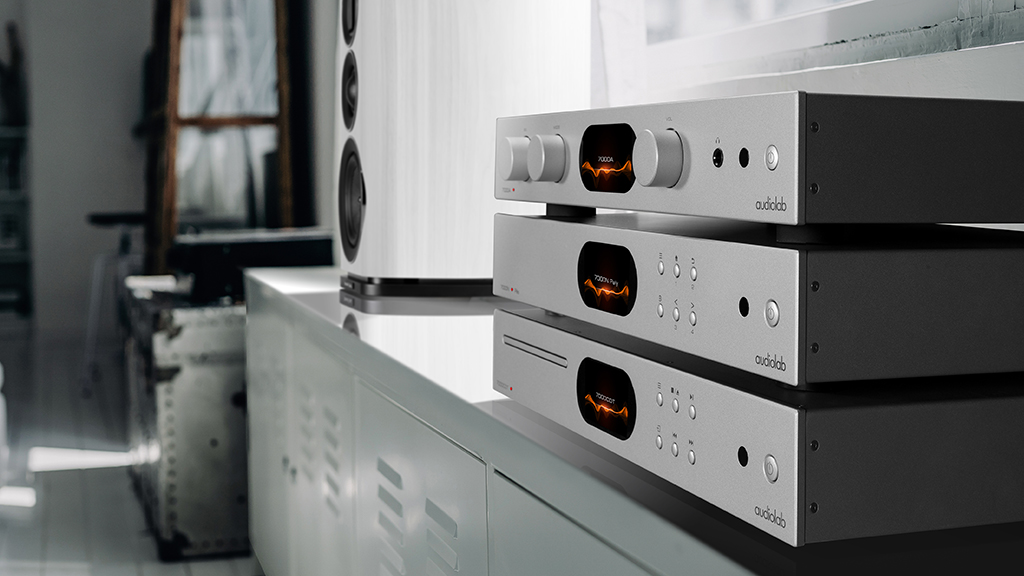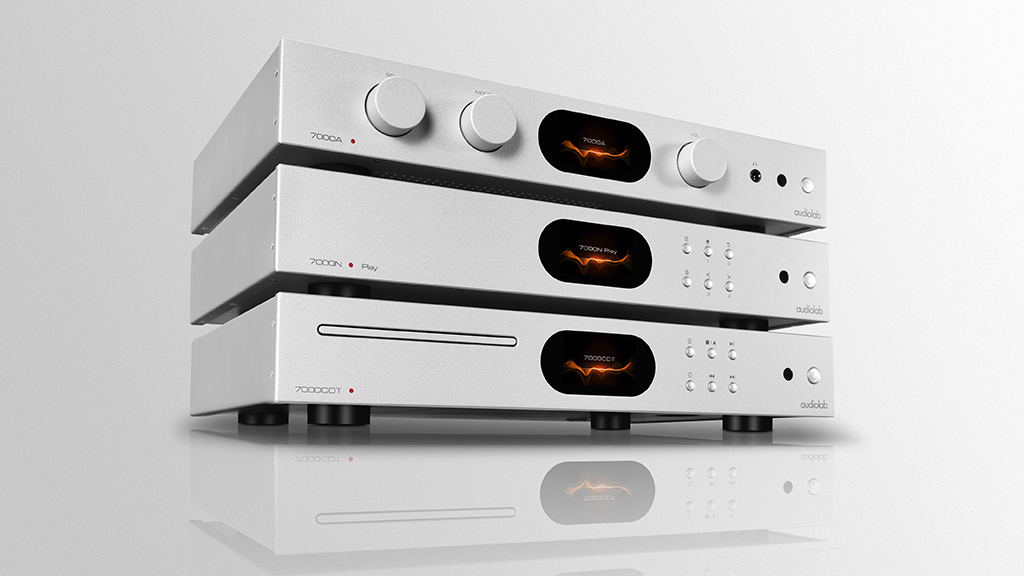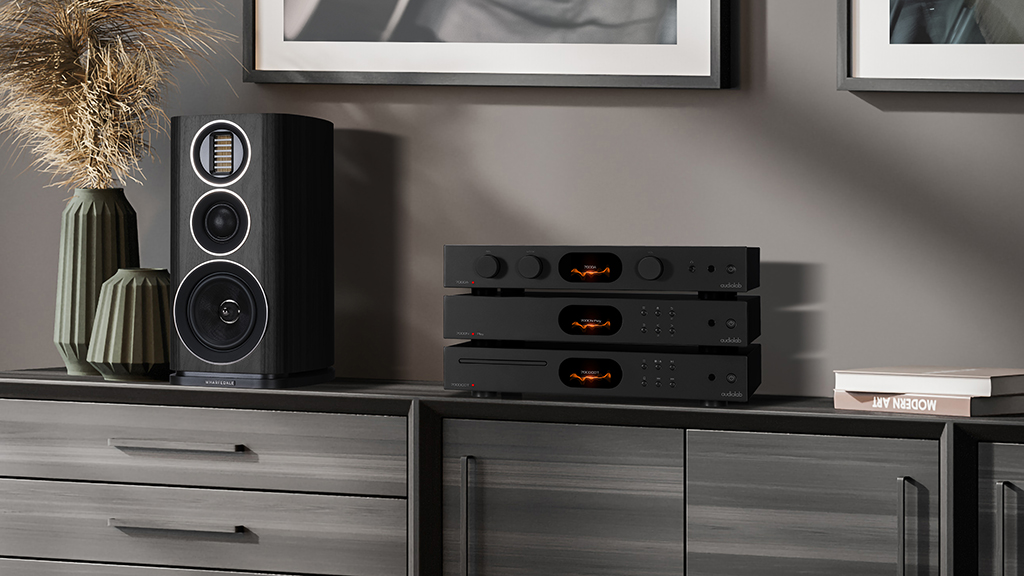Audiolab unveils three mid-range musketeers in its hi-fi 7000 Series
Will its new CD transport, amplifier and streamer be mid-ranging marvels at their popular price points?

There was really only one name Audiolab could logically choose for a new mid-range component series, considering its lineup already comprised the entry-level 6000 Series, the recently announced reference 9000 Series, and the homage-paying 8300 Series. Indeed, the Audiolab 7000 Series is here – a three-strong range comprising an amplifier (7000A), CD transport (7000CDT) and music streamer (7000N Play), slotting into the middle pages of the company’s catalogue to offer a performance level between the two extremes and, who knows, perhaps the best available at its price…
Whether or not Audiolab has created three mid-range marvels here is something we’ll have to ponder a little while longer while we await samples for review, though thankfully we can readily divulge details around the 7000 Series.
The 7000A integrated amplifier (£1099) nestles in between the five-star 6000A (£649) and flagship 9000A (£1999) models and therefore unsurprisingly borrows from both siblings – from both features and engineering perspectives – while also bringing something new to the table.

Like the 6000A, the 7000A has three line-level RCA inputs, an MM phono stage (with an upgraded design this time), Bluetooth support (now upgraded from aptX to aptX HD), and two pairs each of opticals and coaxials – but this time it builds on its sibling by adding a USB Type-B input for PCs, Macs and phones which doesn’t only make it more versatile but also takes file support further to PCM 32-bit/768kHz and DSD512.
There’s now a new-generation 32-bit Sabre chip (the ES9038Q2M) too as well as the same post-DAC active filter and Class A circuitry found in the 9000A. Power output is 20W per channel up – 70W compared to 50W – with the toroidal transformer also having been uprated from 200VA to a new 250VA unit.
Audiolab’s typical choice of three amplifier modes allows users to use the 7000A either as an integrated amplifier, solely as a power amplifier or just as a standalone DAC/preamp. Jan Ertner, Audiolab’s lead electronics designer, has been able to tweak the Class AB circuitry over that found in the 6000A, and while the 7000A looks very similar to its lower-ranging sibling, the main point of differentiation is the front display, which is now bigger and, like the screen on the 9000A, in colour as opposed to monochrome.

This aesthetic upgrade has also been gifted to the 7000CDT transport (£549), which also benefits from a superior, tray-loading mechanism (as opposed to the 6000CDT’s slot-loading one) and enhancements in the power supply and output circuitry that include a more advanced toroidal transformer and a higher level of shielding for the circuits.
Get the What Hi-Fi? Newsletter
The latest hi-fi, home cinema and tech news, reviews, buying advice and deals, direct to your inbox.
In addition to the coaxial and optical outputs (which are fed by a digital stage that has been designed to ‘exhibit vanishingly low levels of jitter’) is a USB Type-A input – a feature borrowed from the 9000CDT – to allow for playback from USB devices.
The last of the mid-range musketeers is the 7000N Play streamer (£549), of course, and Audiolab claims it offers 'a significant step up from its still-current forebear’, the 6000N Play, which is actually a former What Hi-Fi? Award winner, no less. Like other Audiolab streamers, the 7000N Play is based on the third-party, app-controlled DTS Play-Fi multi-room streaming platform – a gateway to a plethora of music streaming services – and it also supports DLNA playback, Spotify Connect and AirPlay 2 too.
The 7000N Play is blessed with the same DAC chip as the 7000A, feeding optical and coaxial outputs that can hook up to an amplifier’s digital input or an external DAC. Alternatively, its RCA outputs can plug straight into an integrated amp, preamp or pair of active speakers.
Again, the aesthetic DNA throughout the 7000 Series is evident in the 7000N Play’s same 2.8-inch LCD colour display and streamlined, full-width chassis, which will be available in black or silver when the three units go on sale in March.
MORE:
Bristol Hi-Fi Show 2023: all the details and what to expect
The best stereo amplifiers and music streamers you can buy
Brand new! Cambridge Audio MXN10 music streamer hands-on review
Becky is the managing editor of What Hi-Fi? and, since her recent move to Melbourne, also the editor of the brand's sister magazines Down Under – Australian Hi-Fi and Audio Esoterica. During her 11+ years in the hi-fi industry, she has reviewed all manner of audio gear, from budget amplifiers to high-end speakers, and particularly specialises in headphones and head-fi devices. In her spare time, Becky can often be found running, watching Liverpool FC and horror movies, and hunting for gluten-free cake.
-
npxavar Looks like the Cambridge Audio CXA81 and Cambridge Audio CXN V2 are getting some serious competition.Reply

